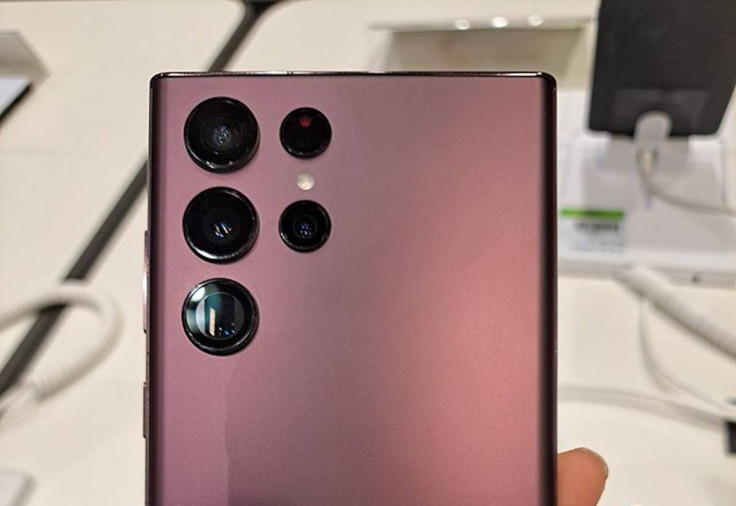Samsung Galaxy S23 Ultra accused of capturing fake moon photos
A Redditor claims the Samsung Galaxy S23 Ultra captures fake moon photos using AI. Here's everything you need to know about the AI moon gate controversy.

Samsung launched the Galaxy S23 series at its Unpacked 2023 event last month. The Galaxy S23 trio comprises the base Galaxy S23, Galaxy S23+, and Galaxy S23 Ultra smartphones. Much to the chagrin of the Galaxy S23 Ultra owners, the highest-end S-series phone is teeming with all sorts of issues.
To recap, some Galaxy S23 Ultra users recently reported an S-Pen issue wherein the stylus disconnects from the phone. Likewise, a considerable number of users claimed their phone has no internet when it is connected to WiFi.
Samsung is reportedly working on a major update that will enhance the cameras on the Galaxy S23 series. In the meantime, the Korean smartphone giant has come under fire from some Galaxy S23 Ultra users again over the authenticity of the phone's Space Zoom photos.
Samsung Galaxy S23 Ultra accused of capturing fake moon photos
Reddit user ibreakphotos shared a post claiming the space zoom moon shots captured by the Galaxy S23 Ultra are fake. The phone applies non-existent details to the moon photos. However, Samsung has previously clarified that it does not add texture effects or overlay images into photos.
Although technically true, ibreakphotos accused Samsung of adding details to the photos of the moon captured with the Galaxy S23 Ultra. The Reddit user proved this through their tests, which involved taking a photo of the moon from the internet, using the blur effect, and then taking a zoomed-in picture of it in a dark room with the Galaxy S23 Ultra.
Reddit user ibreakphotos discovers that Samsung's 'Space Zoom' simply replaces user's moon photos with higher-res images of the moon through a clever testing process. https://t.co/5cLybMld5s
— Halide (@halidecamera) March 11, 2023
This isn't computational photography — it's inserting imagery that simply isn't there. pic.twitter.com/67UyyUa7cX
Since the user applied gaussian blur, the Galaxy S23 Ultra's computational photography algorithms or image signal processor didn't have any data to process. Surprisingly, the captured photo still had more details than the original one. So, the Redditor figured out that the astrophotography moon shots captured with Samsung's flagship phone were "fake" since details were added to the original image.
According to ibreakphotos, Samsung uses AI/ML to add textures of the moon to the pictures of the moon grabbed using the Galaxy S23 Ultra. The AI/ML reportedly alludes to a neural network trained on multiple moon images. Furthermore, the Redditor noted that all the frames have the same amount of details, without any craters.
Although the original image was blurred, the camera of the Galaxy S23 Ultra somehow added these details. Folks at Tom's Guide tried the fake moon test but got different results. The moon shot they captured using the handset turned out to be fuzzy. The difference between the image they captured and the photos ibreakphotos captured could be due to different versions of the One UI software and camera app.
Regrettably, ibreakphotos didn't reveal the versions of the software their phone was running on. Samsung has reportedly decided to turn off post-photo processing after this controversy. Nevertheless, space zoom has made considerable progress since the Galaxy S20 Ultra. However, the 10x optical periscope zoom camera hasn't undergone a radical overhaul since 2020.
How does Samsung's AI work?
As part of its new marketing strategy, Samsung removed the lettering "Space Zoom" from the camera. AI algorithms, on the other hand, have become more versatile and powerful. YouTube channel Versus recently compared the 30x and 100x hybrid zoom of the Galaxy S23 Ultra with a Nikon Coolpix P1000 with the help of zoom images captured in Berlin.
These photos indicate that nothing can replace larger lenses or sensors and optical zoom. Nevertheless, Samsung's camera uses AI to capture photos that are better than Nikon's camera, according to a report by NotebookCheck. On the downside, Samsung's camera has a problem filming moving objects such as people and animals. So, the moon is an ideal zoom object.
super excited about next year’s Samsung S24 super people zoom™ feature, literally can’t believe the sharp portraits it gets when zoomed in https://t.co/tQiPuKpK1R pic.twitter.com/AByASEt7g9
— Sebastiaan de With (@sdw) March 11, 2023
In the comparison video, the YouTuber used a Nikon Coolpix P1000 and the Galaxy S23 Ultra to capture the moon photo and discovered an automatic function on the flagship handset. Notably, this function enables the Galaxy S23 Ultra to better capture the moon's surface at night from a 30x zoom.
It is worth mentioning that the Galaxy S23 Ultra could be using AI to add details to the moon photos, but it is not creating an all-new image. This is similar to applying filters to Instagram photos, according to a Tom's Guide report. In other words, these photos aren't fake Photoshopped images. Still, some users are likely to feel such enhancements are duplicitous.
© Copyright IBTimes 2025. All rights reserved.






















